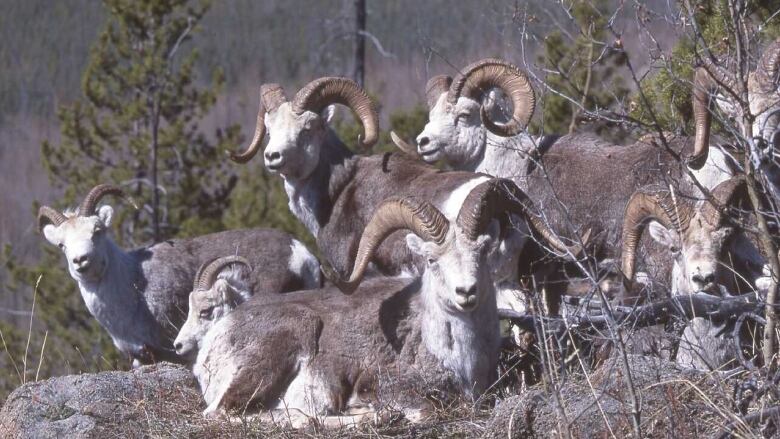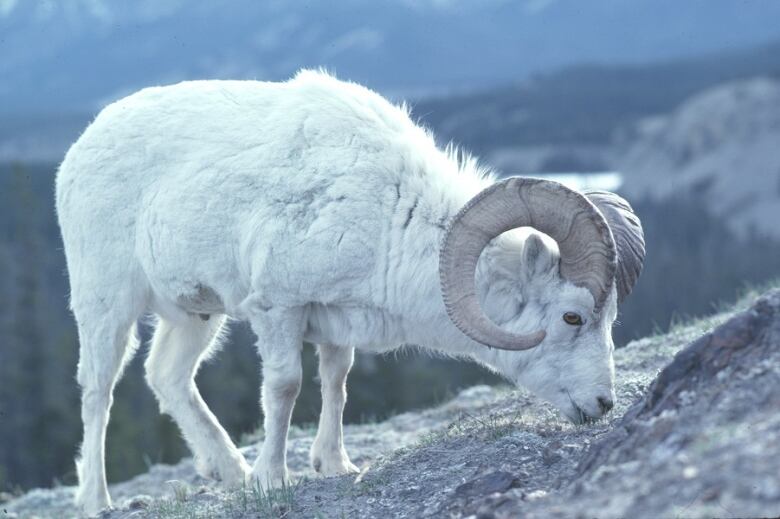Don't judge a sheep by its coat colour, says genetic researcher
PhD candidate studying genetic makeup of sheep in Alaska, Yukon, N.W.T., northern B.C.

Environment Yukon has boxes of horn core samples from thinhornsheep, wrapped in coin envelopes.They are collected and tracked every time a hunter harvests a sheep, and now the samples are being used for research.
"Traditionally, the way we defined the sheep was by its colour," saysZijian Sim, a PhD candidate at the University of Alberta.

Not any more.
Sim analyzed horn samples from across the thinhorn sheep range of Alaska, Yukon, Northwest Territories and northern B.C.
His worksupports the theory that two thinhornsheep groups were separated in different ice-free areas during the last ice age. They became the whitedallsheep of present day Alaska and Yukon, and darker stone sheep of Northern B.C.
A hybrid of the two species is the fannin sheep, found between the two ranges near Faro and Ross River in the Yukon.
After that, it gets a bit fuzzy.

"While we like to put subspecies in boxes, what truly is happening on the ground is that these things exist as a continuum," says Sim.
"We used to think,'OK if you're dark, you're stone, if you're white, you'rea dall's' except now we have these group of sheep who have dark hair but should really be considered dall's sheep [rather] than stone sheep."
To fall into either category, the sheep must contain at least 80 per cent of the genetic material of the subspecies. The sheep that fall somewhere in the middleare fannin.
New picture of sheep in the North
Sim has alreadyanalyzed55 horn samples and he's working on a much larger sample of3,000 from the four jurisdictions.

Troy Hegel, an ungulate biologist with Environment Yukon, is working with Sim on the project. He says the next phase is toidentifythe boundaries where the sheep occur and overlap.
"There's an old subspecies mapfrom the '90s that's used quite often to show where dall's sheep and stone sheep are. But no one's that happy with it."
Sim'snext research release, expected next year, will include an updated map.












_(720p).jpg)


 OFFICIAL HD MUSIC VIDEO.jpg)
.jpg)



























































































